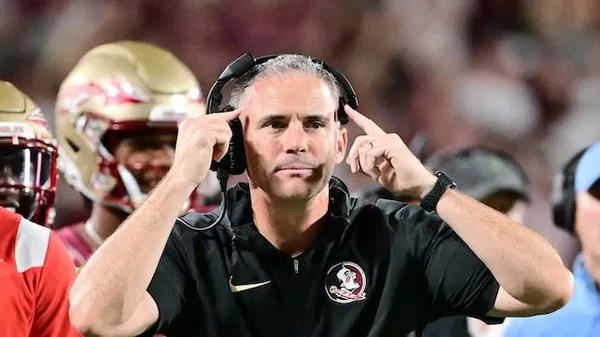
Florida State’s football program has faced a dramatic decline since the end of the 2023 season, where a promising undefeated run was derailed by injuries at quarterback, ultimately costing them a spot in the College Football Playoff. What followed was a disastrous 2-10 record, proving that rebuilding would require more than just minor adjustments—it needed a complete overhaul. Competing in modern college football, especially in the NIL (Name, Image, and Likeness) era, means keeping pace with programs that move swiftly in recruiting and financial investment. Unfortunately for Florida State, that’s where they’ve struggled the most.
The Harsh Reality of Recruiting Budgets
In today’s college football landscape, money isn’t just about paying players through NIL deals; it’s also about staying ahead in the recruiting game. Offering scholarships to top talent is just the final step in a complex process that requires significant financial backing. Schools like Ohio State, Michigan, Alabama, Georgia, and Oregon dominate the recruiting scene because they invest heavily in attracting elite athletes.
Every top program hosts players for visits, showcasing their facilities and pitching their vision for the future. That requires substantial funding, and compared to other major programs, Florida State falls short.
Recruiting analyst Brian Smith recently broke down the numbers, showing that Florida State spent approximately $1.24 million on recruiting in 2022-23. While that figure isn’t insignificant, it pales in comparison to the top-tier programs. Texas, for example, spent nearly double that amount. Other programs spent even more:
Oregon: $1.83 million
Michigan: $2.2 million
Alabama: $2.3 million
Texas: $2.3 million
Oklahoma: $2.6 million
Tennessee: $2.9 million
Texas A&M: $2.9 million
Clemson: $3.1 million
Georgia: $4.5 million
With Georgia spending nearly four times as much as Florida State, the gap in recruiting resources becomes painfully evident. Programs with deeper financial investments can provide top recruits with luxurious visits, better facilities, and more extensive support staff—key factors that influence a player’s decision.
Mike Norvell’s Attempt to Close the Gap
Recognizing the financial disadvantage, Florida State head coach Mike Norvell has made an unprecedented personal commitment. He has agreed to invest $4.5 million from his own salary back into the program as part of a one-year contract restructuring. His goal is to improve student-athlete support and enhance recruiting efforts.
However, even with this personal sacrifice, the question remains: can Florida State ever truly compete with schools that outspend them by millions each year? Compounding the issue is the ongoing debate about Florida State’s place in the ACC.
The $300 Million Dilemma: Should Florida State Leave the ACC?
A major factor affecting Florida State’s ability to compete financially is its conference affiliation. The school would owe the ACC an estimated $300 million if it decided to leave, making any potential departure an extremely costly move. However, the long-term financial outlook in other conferences is significantly more lucrative.
For example, the Big Ten’s new media deal is set to provide each school $70 million annually—a number expected to climb to $80-100 million in the coming years. Comparatively, the SEC will distribute approximately $51 million per team in 2025 due to its lucrative television agreements.
If Florida State were to move to either of these conferences, they could significantly increase their revenue, helping them invest more in recruiting and compete on an even playing field with national powerhouses. However, the massive buyout required to leave the ACC makes this transition nearly impossible in the short term.
The Road Ahead
Norvell and Florida State’s leadership are at a crossroads. They must either find innovative ways to increase funding within the ACC or make a bold financial commitment to leave and join a conference with greater resources.
For now, Norvell is doing everything he can, including personal financial contributions, to close the gap. But with the current structure, Florida State is fighting an uphill battle against programs that have more money, deeper talent pools, and stronger recruiting resources.
If the Seminoles want to return to national prominence, they must either increase their spending or find a way out of the ACC’s financial constraints. Until then, they risk falling further behind the nation’s elite programs.